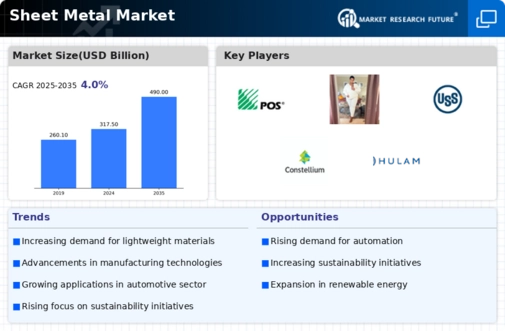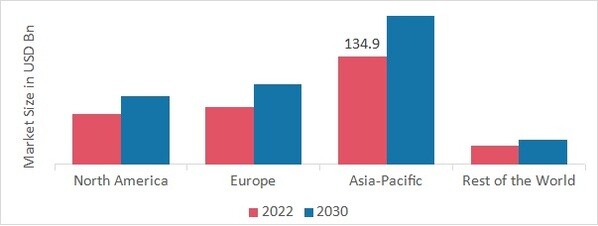Market Share
Sheet Metal Market Share Analysis
Market share positioning strategies in the sheet metal market are critical for companies to establish and maintain a competitive edge in the industry. Sheet metal, widely used in various sectors such as automotive, construction, aerospace, and electronics, presents a dynamic landscape where companies vie for market dominance. One prevalent strategy employed by companies is differentiation through product innovation. By offering unique features, such as enhanced durability, lightweight construction, or specialized coatings, companies can carve out a distinct market segment and attract customers seeking specific benefits. This approach not only allows companies to command premium prices but also fosters brand loyalty, thereby solidifying their market share. An increase in demand for metal sheets in aeronautics as well as in defense sectors helps in the expansion of the growth of the business.
Furthermore, pricing strategies play a pivotal role in market share positioning within the sheet metal industry. Some companies opt for a cost leadership strategy, aiming to undercut competitors by offering products at lower prices while maintaining acceptable quality standards. This approach appeals to price-sensitive customers and can lead to increased market penetration, especially in price-driven markets or during economic downturns. Conversely, others may pursue a premium pricing strategy, positioning themselves as providers of high-quality sheet metal products with superior performance characteristics. While this approach may limit market share in terms of volume, it can yield higher profit margins and cater to customers valuing quality over price.
In addition to product differentiation and pricing, effective distribution channels are essential for capturing market share in the sheet metal industry. Companies may strategically partner with distributors or enter into exclusive agreements with suppliers to ensure widespread availability of their products. Moreover, leveraging e-commerce platforms and online marketplaces can broaden reach and accessibility, particularly in global markets. By optimizing distribution networks, companies can streamline the supply chain, minimize lead times, and enhance customer satisfaction, thereby solidifying their position in the market.
Another key aspect of market share positioning strategies is brand reputation and customer service. Building a strong brand image synonymous with reliability, quality, and customer satisfaction can significantly influence purchasing decisions in the sheet metal market. Companies that prioritize customer service, offering responsive support, technical assistance, and efficient after-sales services, often enjoy higher customer retention rates and positive word-of-mouth referrals. This fosters a loyal customer base and acts as a barrier to entry for competitors, thereby safeguarding market share.
Furthermore, strategic partnerships and acquisitions can provide companies with opportunities to expand their market presence and diversify their product offerings. Collaborating with complementary businesses or acquiring competitors can enable companies to access new customer segments, penetrate untapped markets, and capitalize on synergies to drive growth. By strategically aligning with industry leaders or investing in emerging technologies, companies can reinforce their competitive position and gain a larger share of the sheet metal market.
Moreover, investing in research and development (R&D) to stay ahead of technological advancements and market trends is crucial for maintaining market share in the sheet metal industry. By continuously innovating and adapting to changing customer demands, companies can introduce cutting-edge products that outperform competitors and meet evolving industry standards. Whether through the development of sustainable materials, advanced manufacturing processes, or customization capabilities, R&D investments can fuel differentiation and strengthen market positioning over the long term.


 Source: Secondary Research, Primary Research, Market Research Future Database and Analyst Review
Source: Secondary Research, Primary Research, Market Research Future Database and Analyst Review





Leave a Comment